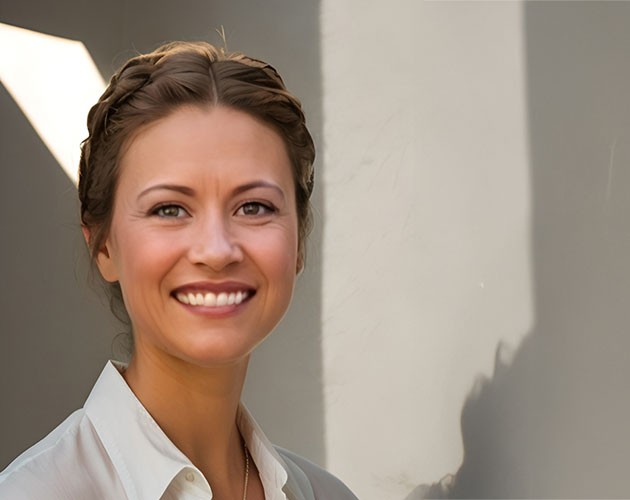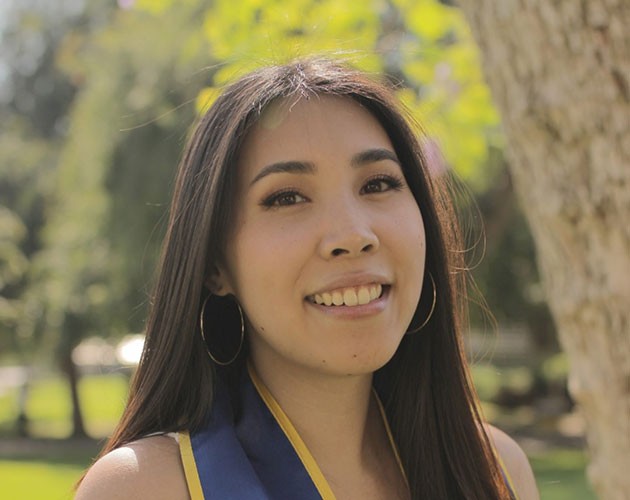Meet Your Instructor: Monica Ranes-Goldberg

In 1999, the euro was established, Microsoft released Windows 98, Star Wars Episode 1 was released and Napster debuted. And a lesser-known fact: Longtime UC Berkeley Extension science instructor Monica Ranes-Goldberg created online course Introductory Biology as part of the school's first foray into the then-new learning environment, using AOL as the platform.
"The Internet in general had also exploded at that time," Ranes-Goldberg remembers. "Google had just been founded the year before, and the vast majority of people did not know how to do internet searches. This was also a world without YouTube. My first online course did not have PowerPoint slides and the textbook publishers did not provide companion websites; there was very little in the way of supporting materials that could be used online."
It's hard to imagine a world without Google—and for many students, a world without an option to take their courses online. In fact, online learning is fast becoming a requirement—not just a nicety—for students, considering that 5.8 million students enrolled in an online course in 2015, a 263% increase in the last 12 years.
Nearly two decades later since her initial foray into translating that Intro Bio classroom course to online learning, Ranes-Goldberg is still bringing high-quality science education to her students around the globe, teaching Immunology, Hematology, Biology and Current Topics in the Biosciences.
Did you know? Monica Ranes-Goldberg received her B.A. in Molecular Biology from UC Berkeley and a Ph.D. in Cellular and Developmental Biology from Harvard University.
In the 17 years you've been teaching online science courses, how has acceptance of this platform evolved?
Many critics thought mainstream institutions would never accept credits for these online courses and that students would not learn adequately in this environment. Now, many graduate programs actually recommend some of Extension's online science courses to their prospective students who have particular prerequisite courses to complete. In particular, Hematology and Immunology satisfy core requirements for CLS programs. Immunology is also a requirement for optometry and pharmacy graduate programs. I have a growing list of former students who are applying their online course credits for acceptances to Ph.D., veterinary, dentistry and medical school programs.
I'm still reeling that the platform was first hosted on AOL! Tell me about the other changes that have happened in developing online courses.
The content is now much richer and much more interactive due to the depth of material available. Notably, the textbook publishers have also changed. For example, for Introductory Biology, the Campbell Biology textbook is now available in an electronic version and is bundled with a tremendous companion website that has many interactive learning activities, tutorials and videos. For the Immunology and Hematology courses, I provide links to a wealth of information and interactive online tutorials. I'm able to tap into these rich resources in ways that are not possible in a live classroom.
How do your online courses stay current with what's happening in the field?
For the Introductory Biology, Hematology and Immunology courses, we regularly update the courses when the publishers release a new edition of the corresponding textbook. These courses also include discussion forums where students can conduct online research on current topics. Two years ago I began teaching Current Topics in the Biosciences in which each week students explore a different "hot topic" in biology.
And you're at the forefront of understanding "hot topics" in biology with your biotech training.
I started offering biotech training services in response to requests for training and advising that stemmed from connections that I had made in various pharmaceutical, venture capital and law organizations. My clients have varied from sales teams, regulatory professionals, biostatisticians, chemists, lawyers and venture-capital investors. I have served as an expert witness in a pharmaceutical patent litigation, I have provided a series of webinars for a pharmaceutical sales team, and I have provided live training onsite at numerous companies. Recently, I provided a webinar series for a health care investment firm in New York City.
My awareness of hot topics in the real world of biotechnology has guided me in shaping the discussion forum topics for the Hematology and Immunology courses, and in determining the overall curriculum for the Current Topics course.
Bringing these real-world concepts to the online classroom sounds like a great way to keep students engaged, especially as they're not sitting in a classroom. How else do you encourage student engagement, and how does this differ from teaching in a live classroom?
In a live classroom, it is important to keep the lecture entertaining, while also striving to create an interactive atmosphere. Shy students typically cower in the back of the room no matter how friendly or approachable I try to be. In an online course, every interaction that I have when evaluating work or answering an email question is one-on-one. When I grade student work, I provide specific and substantive feedback. I think it is important to provide balanced feedback that indicates errors while also highlighting parts that are done well. A "very good" comment can go a long way in boosting a student's confidence. I also have the luxury to provide in-depth answers to student questions at any time and any day. I check my email several times throughout the day.
So when you're not teaching or providing training services, where we can we find you?
I also teach group fitness classes. I have been a certified group exercise instructor since 1992. Currently, I teach Zumba and U-Jam, as well as indoor cycling, five days per week at local fitness facilities. My husband and I enjoy taking long walks and trying new restaurants. We also love to travel when we can. Our two children are away at college, so we are adapting to this new phase in our lives.
Did you know? Monica Ranes-Goldberg was a post-doctoral Fellow at Institut Pasteur and at DNAX Research Institute.
Thank you, Monica, for taking time out of your very busy schedule to chat with us. We’re excited to see what you come up with for the next version of online science courses!


